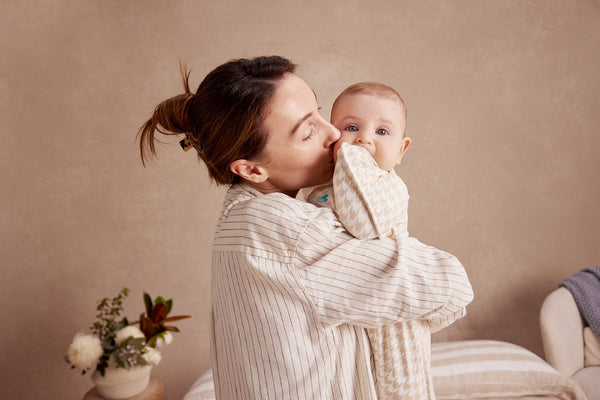What is Sleep Training?
Sleep training refers to the process of teaching infants to self-soothe and sleep independently through the night. It involves implementing strategies and routines to help babies learn how to fall asleep without being rocked, nursed, or held by their parents. Sleep training aims to establish healthy sleep habits and promote better sleep quality for both babies and parents.
When Should You Start Sleep Training a Baby?
The ideal age to start sleep training a baby varies from child to child. While some parents begin sleep training as early as 4-6 months, others may wait until their baby is closer to 6-8 months old. It's essential to consider your baby's developmental readiness, individual temperament, and any medical concerns before embarking on sleep training. Most experts agree that sleep training is most effective when babies are developmentally ready and can self-soothe to some extent.
How Long Does Sleep Training Take?
The duration of sleep training varies depending on the baby's age, temperament, and the chosen method. While some babies may adapt to sleep training within a few nights, others may require more time and patience. On average, it can take anywhere from a few days to several weeks for babies to establish new sleep habits and routines. Consistency and perseverance are key factors in the success of sleep training.
4 Baby Sleep Training Methods
There are various sleep training methods that parents can choose from, depending on their baby's temperament and their own parenting style. Consistency is crucial when implementing these methods to ensure effectiveness and success. Below, we outline four popular baby sleep training methods along with step-by-step instructions for each.
Method 1: Shush & Pat Settling
This method involves soothing the baby by gently patting or stroking while making a shushing sound to help them relax and fall asleep.
Step by step process:
- Once all the baby's needs are met, place them back in their crib.
- Use the palm of your hand to pat or stroke the baby's forehead gently and rhythmically.
- Place your other hand gently but firmly on the baby's chest for reassurance.
- Make a loud continuous "shhhhhhh" sound while patting or stroking.
- Continue for 30 seconds to one minute, then leave the room while monitoring the baby.
- If the baby doesn't settle, repeat the process at intervals until they fall asleep.
Method 2: Pick Up, Put Down Settling
This method involves picking the baby up briefly to offer comfort and then putting them back down to sleep.
Step by step process:
- Pick the baby up from the crib and hold them standing in a stationary position.
- Offer comforting words in a hushed voice for a short period.
- Once calm but still awake, place the baby back in the crib and leave the room.
- Monitor the baby and repeat the process at intervals until they fall asleep.
Method 3: Chair Sleep Training
This method involves sitting in a chair next to the baby's crib while they fall asleep.
Step by step process:
- Sit in a chair next to the baby's crib but avoid direct interaction.
- Offer verbal reassurance if needed but refrain from picking up or touching the baby.
- Gradually increase the distance between yourself and the crib as the baby learns to self-soothe.
Method 4: Responsive Settling
This method involves responding promptly to the baby's cues and needs while encouraging self-soothing.
Step by step process:
- Respond promptly to the baby's cries or fussiness with comforting words and gentle touch.
- Encourage the baby to self-soothe by offering reassurance and gradually reducing hands-on comforting.
Baby Sleep Training Tips
In addition to the sleep training methods mentioned above, here are some helpful tips to facilitate the process:
- Pay attention to your baby's cues and needs to avoid misinterpreting their signals.
- Be mindful of the balance between offering comfort and allowing the baby to self-soothe.
- Experiment with different techniques and adjust them according to your baby's response.
- Stay consistent with your chosen method to help the baby establish healthy sleep habits.
By understanding your baby's unique needs and temperament, along with implementing consistent sleep training methods, you can help them develop healthy sleep habits and enjoy restful nights for the whole family.






